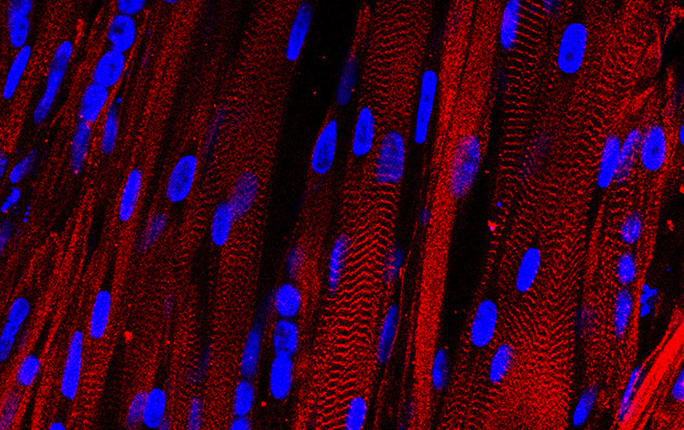Fully functional muscles grown in the laboratory.
Scientists from Duke University have grown human skeletal muscles in the laboratory: they respond to external stimuli, such as electrical impulses, biochemical signals, and pharmaceuticals, just like the original.

For the cultivation of muscles used myoblasts - the precursors of muscle fibers, taken using a biopsy from an adult. Of myoblasts in the development of the embryo and during regeneration of the skeletal muscles in the post-embryonic period, striated muscle fibers are formed. Scientists placed cells in very small “scaffolding” and waited until they turned into muscle fibers. As one of the scientists noted, it was a difficult year of searching for the density of gel cells and optimizing the matrix.
Then the scientists checked whether the fabric works like an “original”. It was found that the muscle responds to an electrical impulse, which was not previously seen in samples grown under laboratory conditions. There was also a response to drugs. Since such muscle tissue has a very close resemblance to the present, it can be used to test medications. This, and not prosthetics, is the goal of this development.
')
In addition, this is a step towards the direction of personalized medicine, because you can take a biopsy from a specific patient, grow muscles and test a new drug on this tissue without much risk.
Syncytium is a multi-core muscle fiber.

Bioengineers from Duke University have long worked on growing muscles in the laboratory. Last year, they presented a muscle with the ability to heal itself and implanted it into the body of a mouse.

For the cultivation of muscles used myoblasts - the precursors of muscle fibers, taken using a biopsy from an adult. Of myoblasts in the development of the embryo and during regeneration of the skeletal muscles in the post-embryonic period, striated muscle fibers are formed. Scientists placed cells in very small “scaffolding” and waited until they turned into muscle fibers. As one of the scientists noted, it was a difficult year of searching for the density of gel cells and optimizing the matrix.
Then the scientists checked whether the fabric works like an “original”. It was found that the muscle responds to an electrical impulse, which was not previously seen in samples grown under laboratory conditions. There was also a response to drugs. Since such muscle tissue has a very close resemblance to the present, it can be used to test medications. This, and not prosthetics, is the goal of this development.
')
In addition, this is a step towards the direction of personalized medicine, because you can take a biopsy from a specific patient, grow muscles and test a new drug on this tissue without much risk.
Syncytium is a multi-core muscle fiber.

Bioengineers from Duke University have long worked on growing muscles in the laboratory. Last year, they presented a muscle with the ability to heal itself and implanted it into the body of a mouse.
Source: https://habr.com/ru/post/375517/
All Articles